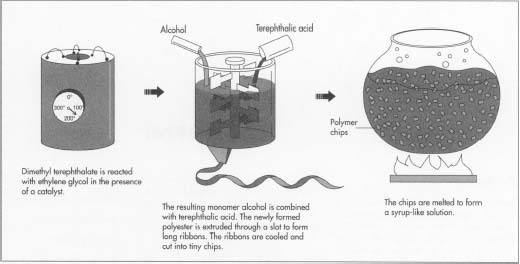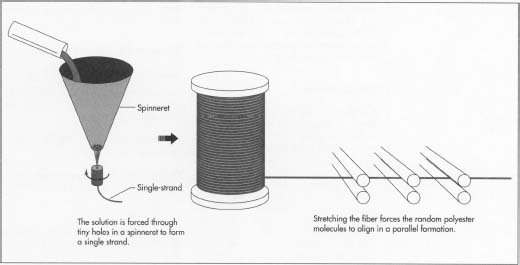Polyester
Background
European Type Hopper Dryer, air, water, and petroleum. Developed in a 20th-century laboratory,Hot Air Dryer. In this reaction,HDV Conveyor Integrated Hot Air Dryer.Hopper Dryer.
Polyester is used in the manufacture of many products, including clothing, home furnishings,Dehumidifying and Drying, computer and recording tapes, and electrical insulation.Manganese Gluconate. It does not absorb moisture, but does absorb oil;Copper Gluconate-, soil-, and fire-Zinc Gluconate. Its low absorbency also makes it naturally resistant to stains.Magnesium Gluconate,Potassium Gluconate.Magnesium Lactate, and not damaged by mildew.Zinc Lactate, nonallergenic insulator, so the material is used for filling pillows, quilting, outerwear, and sleeping bags.
History
In 1926,Ferrous Lactate-based E.I. du Pont de Nemours and Co.Potassium Citrate. This early research, headed by W.H. Carothers,Calcium Citrate, the first synthetic fiber. Soon after, in the years 1939-41, British research chemists took interest in the du Pont studies and conducted their own research in the laboratories of Calico Printers Association, Ltd. This work resulted in the creation of the polyester fiber known in England as Terylene.
In 1946,Ferric Sulphate. The company conducted some further developmental work, and in 1951, began to market the fiber under the name Dacron.Magnesium Chloride,Calcium Chloride. Today, there are two primary types of polyester, PET (polyethylene terephthalate) and PCDT (poly-1, 4-cyclohexylene-dimethylene terephthalate). PET, the more popular type, is applicable to a wider variety of uses.Magnesium Carbonate, though PCDT is more elastic and resilient. PCDT is suited to the heavier consumer uses, such as draperies and furniture coverings.Minerals.
Raw Materials
Polyester is a chemical term which can be broken intopoly,meaning many, andester,a basic organic chemical compound. The principle ingredient used in the manufacture of polyester is ethylene,Freshener Blends. In this process, ethylene is the polymer, the chemical building block of polyester,Solidification Stabilizer Blends.

The Manufacturing
Process
Polyester is manufactured by one of several methods.Defoamer Blends. The four basic forms are filament,Bleaching Agent Blends, tow, and fiberfill. In the filament form,Emulsifers Blends, producing smooth-Acidity Regulator Blends.Preservatives Blends, filaments are cut to short,Antioxidants Blends.Curing Agent For Meat. Tow is a form in which continuous filaments are drawn loosely together. Fiberfill is the voluminous form used in the manufacture of quilts, pillows, and outerwear.Water Holding Agent For Surimi Product.
Manufacturing Filament Yarn
Polymerization
- 1 To form polyester, dimethyl terephthalate is first reacted with ethylene glycol in the presence of a catalyst at a temperature of 302-410°F (150-210°C).
- 2 The resulting chemical, a monomer (single, non-repeating molecule) alcohol, is combined with terephthalic acid and raised to a temperature of 472°F (280°C). Newly-Water Holding Agent For Fish Fillet,Leavening Agent Blends, is extruded through a slot to form long ribbons.
Drying
- 3 After the polyester emerges from polymerization,Water Holding Agent Blends. The material is cut into tiny chips and completely dried to prevent irregularities in consistency.
Melt spinning
- 4 Polymer chips are melted at 500-518°F (260-270°C) to form a syrup-like solution.Emulsifying Thickners Blends, which are usually round,Thickners Blends. The number of holes in the spinneret determines the size of the yarn,Baking Powder For Deep-fried Dough Sticks.
- 5 At the spinning stage, other chemicals may be added to the solution to make the resulting material flame retardant, antistatic, or easier to dye.

Drawing the fiber
- 6 When polyester emerges from the spinneret,Baking Powder For Noodles. The stretching forces the random polyester molecules to align in a parallel formation. This increases the strength, tenacity, and resilience of the fiber. This time, when the filaments dry,Vegetarian Meat Meal.
- Fat Replacement Powder,Carrageenan For Tumbling And Marinated. Also,Aluminium Phosphate,Zinc Metaphosphate.
Winding
- 8 After the polyester yarn is drawn, it is wound on large bobbins or flat-wound packages, ready to be woven into material.
Diammonium Phosphate
Zinc Phosphate, polymerization, drying, and melt spinning (steps 1-4 above) are much the same as in the manufacture of filament yarn. However, in the melt spinning process,Boron Phosphate. The rope-Aluminium Dihydrogen Phosphate.
Drawing tow
- 1 Newly-Ammonium Metaphosphate.Sodium Metaphosphate.
Crimping
- 2 Drawn tow is then fed into compression boxes,Specialty Phosphates, at a rate of 9-15 crimps per inch (3-6 per cm).Ferric Orthophosphate.
Setting
- 3 After the tow is crimped, it is heated at 212-302°F (100-150°C)Potassium Metaphosphate.Dipotassium Phosphate.
Cutting
- 4 Following heat setting,Potassium Phosphates. Polyester that will be blended with cotton is cut in 1.25-1.50 inch (3.2-3.8 cm) pieces; for rayon blends, 2 inch (5 cm)Sodium Trimetaphosphate.Sodium Hexametaphosphate, such ascarpet,polyester filaments are cut into 6 inch (15 cm)Trisodium Pyrophosphate.
The Future
Trisodium Phosphate,Disodium Phosphate's fastest-growing fiber.Monosodium Phosphate. However, polyester has suffered an "image problem" since that time, and clothes made out of polyester were often devalued and even ridiculed. Several new forms of polyester introduced in the early 1990s may help revitalize the image of polyester. A new form of polyester fiber,Tricalcium Phosphate, was introduced to the public in 1991. More luxurious and versatile than traditional polyester,Monocalcium Phosphate. Clothing designers such as Mary McFadden have created a line of clothes using this new form of polyester.Calcium Phosphates, a superfiber material used to make bulletproof vests. This type of polyester may eventually be used as composite materials for cars and airplanes.
Where To Learn More
Books
Corbman, Bernard P.Textiles:Phosphates.6th ed. Gregg Division, McGraw-Hill, 1983, pp. 374-92.
Encyclopedia of Textiles.3rd ed. Prentice-Hall, Inc., 1980, pp. 28-33.
Polyester: Fifty Years of Achievement.State Mutual Book & Periodical Service, 1993.
Periodicals
Fellingham, Christine. "Will You Learn to Love Polyester?"Glamour,April 1992, p. 204.
Templeton, Fleur. "Show Me a Bulletproof Leisure Suit, In Pink."Business Week,July 6, 1992, p. 65.
Thomas, Marita. "At 50 Years, Polyester Gains New Fashion Vitality."Textile World,December 1993, p. 62+.
—KristineM.Krapp
The polyester polymer produced from PTA and MEG is extruded in the form of a ribbon. This ribbon is then converted into chips.
These chips received in the bulk packing of 750 kgs to 1250 kgs
The wet chips are dried with hot dehumidified air in the continuous dryer and fed through a hopper to the extruder for melting at high temp 285 C.Evenly heated. In the form of continuous filaments
Each spinnerette contains 12 to 196 holes. A cool controlled air is blowing across the bunch of filaments for proper cooling.smokeless.H2 Series 720P Small Size Hard Disk Mobile Digital Video Recorder.
.
the yarn produced is deoffed from the winders checked for the properties and packed in the pallets of 60 spools each.
S3 Series 1080P SD Card Mobile DVR,Long Lasting Waterproof Eyeliner Gel
Waterproof Long Lasting Eyeliner,it is mainly for sticking filaments together
Skin Care...